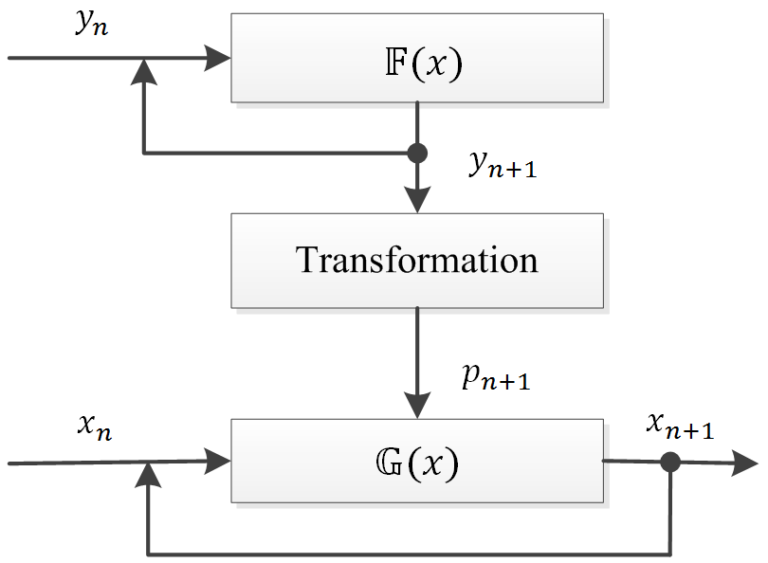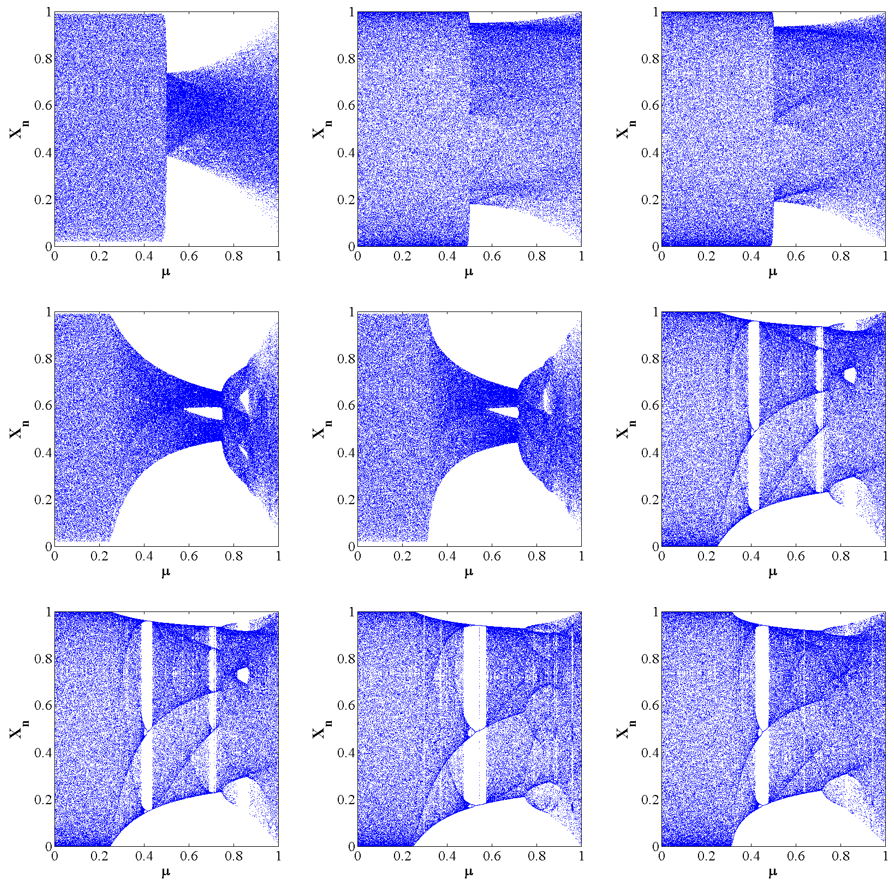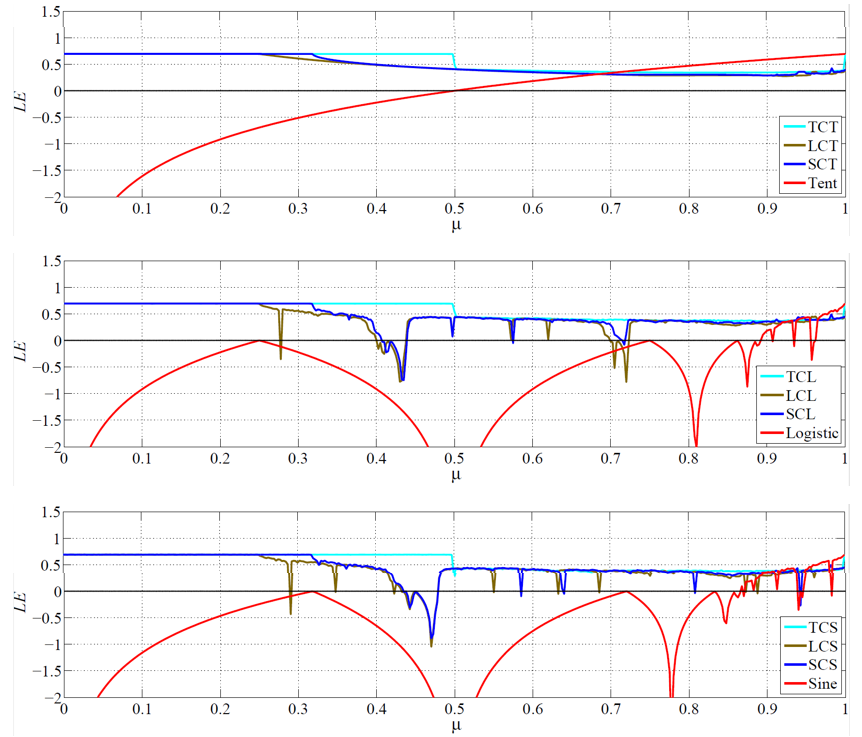Dynamic Parameter-Control Chaotic System
Introduction
This paper proposes a general framework of 1D chaotic maps called the dynamic parameter-control chaotic system (DPCCS). It has a simple but effective structure that uses the outputs of a chaotic map (control map) to dynamically control the parameter of another chaotic map (seed map). Using any existing 1D chaotic map as the control/seed map (or both), DPCCS is able to produce a huge number of new chaotic maps. Evaluations and comparisons show that chaotic maps generated by DPCCS are very sensitive with their initial conditions, and have wider chaotic ranges, better unpredictability and more complex chaotic behaviors than their seed maps. Using a chaotic map of DPCCS as an example, we provide an FPGA design of this chaotic map to show the simplicity of DPCCS in hardware implementation, and introduce a new pseudo-random number generator (PRNG) to investigate the applications of DPCCS. Analysis and testing results demonstrate the excellent randomness of the proposed PRNG.
Proposed dynamic parameter-control chaotic system (DPCCS)
To generate a new chaotic map, DPCCS uses a chaotic map to dynamically control the parameter of another chaotic map. Figure 1 shows the structure of DPCCS. F(x) and G(x) are two 1D chaotic maps. F(x) is called the control map while G(x) is the seed map to generate iterative values. pn+1 is the control parameter of the seed map G(x). The transformation process is designed to scale the output of F(x) into the chaotic range of the G(x)’s parameter such that the seed map G(x) always has chaotic behaviors. After transformation, G(x) generates the output values xn+1 with a dynamic parameter pn+1. Notice that the parameter of the seed map G(x) is fixed or dynamically changed in each iteration.
 |
| Figure 1. The structure of DPCCS. |
Figure 2 shows bifurcation diagrams of these new chaotic maps. Their outputs distribute randomly in most parameter settings but their chaotic ranges are not continuous. This is because their corresponding seed maps, the Logistic and Sine maps, have discontinuous chaotic ranges and their control maps’ outputs happen to be transformed in the nonchaotic ranges of seed maps.
 |
| Figure 2. The bifurcation diagrams of nine new chaotic maps. |
Performance
Figure 3 plots the LE values of different chaotic maps. The Tent, Logistic and Sine maps are exsiting chaotic maps, the rest are new ones. As can be seen, only the LCL, SCL, LCS and SCS maps have chaotic behaviors in most parameter settings while other new chaotic maps have chaotic behaviors in whole parameter ranges. The new chaotic maps have bigger average LE values than their corresponding seed maps. A dynamic system with a positive LE value is chaotic and a larger LE value means better chaos performance. Compared with their seed maps, the new chaotic maps generated by DPCCS have wider parameter ranges with positive LE values, and their LE values are bigger in most parameter settings. Thus, these new chaotic maps have more complex chaotic behaviors than their seed maps.
 |
| Figure 3. LE comparisons of new chaotic maps with existing ones. |